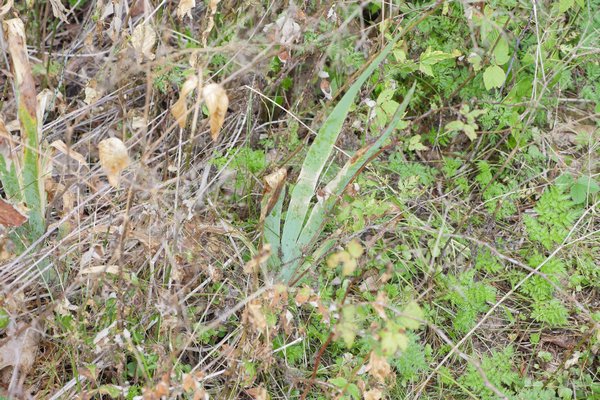

With only four weeks left on the calendar until that appointed day says “fall,” it’s time to fall back, regroup and get ready for what is really the most important planting opportunity. Many gardeners think that spring, being the time for rebirth, is the logical time for planting and transplanting.
The truth, though, is that while the warming and moist soils of spring are great for things growing from seeds (like weeds), it’s the cooling soils of the fall that favor the growth of roots. This means that from late August through October is an opportunity to divide and transplant many perennials, plant and move some trees and shrubs, rejuvenate a lawn and plant spring and even summer flowering bulbs.First let’s look at what’s going on that makes the fall so important for planting. Every morning I listen to a weather forecast in which the forecaster tells me how many minutes of daylight we’re losing that day. A minute here, two minutes there and before you know it the sun is setting after 4 instead of closer to 9. And as this transition takes place and the sun gets lower and lower in the sky, our leafy plants respond by dropping their foliage. But there is something else going on that’s quite dramatic. As the days get shorter and the sunlight hitting the soil becomes diminished, the soil, ever so gradually, like the loss of a minute of daylight, begins to cool and loses a degree or 2 of warmth. And you might think this diminution slows things down. But it doesn’t.
The fact is that as the soil cools, roots come back to life, and instead of simply supporting the life of the plants above the ground, the roots of many plants go into a growth frenzy that’s been really understood only in the last decade. In fact, until recently it was thought that tree roots ceased growing in late October and November, but now we know that many tree and shrub roots, and even the roots of many perennials continue to grow until the ground is frozen. Granted, there is still some root growth or activity in the warmer months, and this is especially true of our garden annuals, but for the most part root function during the hot months is simply to support a stressed shoot system. When these shoots (leaves and the like) are finished for the season, the plants’ roots take on the function of expansion and carbohydrate storage that allows these plants to live through the winter.
So, as gardeners we take advantage of this phenom, knowing that a wide range of plants can be safely planted and transplanted in the fall, and because of all this root growth, as well as the lack of growing and expanding foliage above the ground, the plants recover quickly and return with vigor the following spring. Do this kind of work in the spring, though, and your chances of success are nil to middling with a few exceptions.
Let’s start with a few exceptions, then get into the rules. A number of years ago I divided a wonderful spring-blooming perennial, amsonia tabernaemontana or the common bluestar, from a garden where it had been planted nearly 60 years ago. The plant was 3 feet in diameter, and I had to use an ax and a saw to divide the crown. Here’s the dilemma, though. If it is moved in the fall, you lose the aesthetic effect of its dramatic change in foliage color and if you move it in the spring you can sacrifice that year’s flowering. Either way, the plant will survive, but from a stress point of view, the fall move might be preferred.
Then there’s the dilemma of garden lilies, the ones that bloom from June through August and are not to be confused with day lilies. I’m speaking now about the Asiatics, the Orientals and the Orienpet hybrids. Some garden centers and mail order growers will sell and ship them in the spring (mostly from Holland stock) and in the fall. So last year I did some informal polling on when it’s better to plant these … spring or fall. I heard a lot of “It doesn’t matter,” but I was ever so suspicious that this information was more marketing than horticultural truth. Think about it logically, though. You get and plant a hardy bulb in May that’s been kept in a refrigerator since October and it normally blooms in early July or, for the Asiatics, late June. Yes, if planted in May it will actually bloom … but late and shorter than “normal,” because as soon as it’s planted it has to establish a root system, and then in a matter of a few weeks both weather and genetics tell it to flower. It’s not a good formula for success.
On the other hand, if this lily was planted in the fall and allowed to establish a strong and vigorous root system and then go dormant in the ground for the winter, followed by a slow and quite natural revival in the spring, you end up with a magnificent, perfectly timed, unstressed and beautiful lily. Makes lots of sense to me. There is a little caveat, though. While the best time for planting the magnificent lilies is in the fall, you need to order them in the spring, as the most popular varieties sell out very quickly. Remember, the catalogs come out in May, but the bulbs aren’t shipped until late September or October. Unless of course you make that instant gratification mistake and buy and plant in May. Not a great idea.
In the area of trees, some are actually best planted and transplanted in the spring. Why? Because some trees have very slow growing root systems, and transplanting them in the fall may not give the roots enough time to establish enough new mass to survive the winter. In this case trees such as the red maple, birches, flowering dogwood, magnolia, most oaks, poplars and willows are best transplanted and planted in early spring.
And there is yet one more major exception—plants grown in containers. Container-grown trees, shrubs and perennials can usually be safely planted from mid-March through late October since their roots are intact, and we have to hope or presume these plants have been adequately watered through the season. As I discussed in an earlier column, though, once they are taken out of the container, great care has to be taken to tease out and unfurl the roots before planting, or they will continue to grow in a circular manner, resulting in a failure to thrive and slow but steady failure.
Much more on this topic next week, especially perennials, but for now you need to order your spring-flowering bulbs, which must be planted in the fall. Why? Spring-flowering bulbs like crocus, tulips, daffodils and alliums have to establish their root systems in the fall when the soil is cooling. And remember, when planting spring-flowering bulbs, size does count. Keep growing.
 More Posts from Andrew Messinger
More Posts from Andrew Messinger